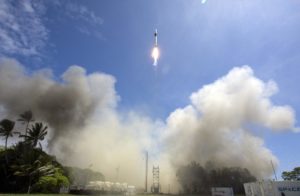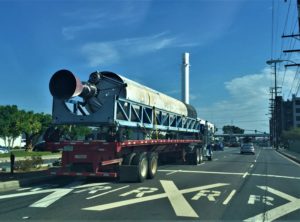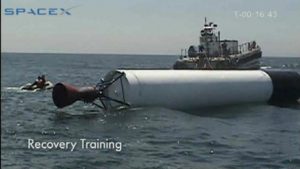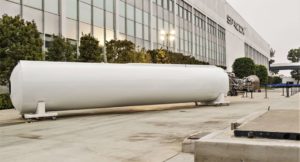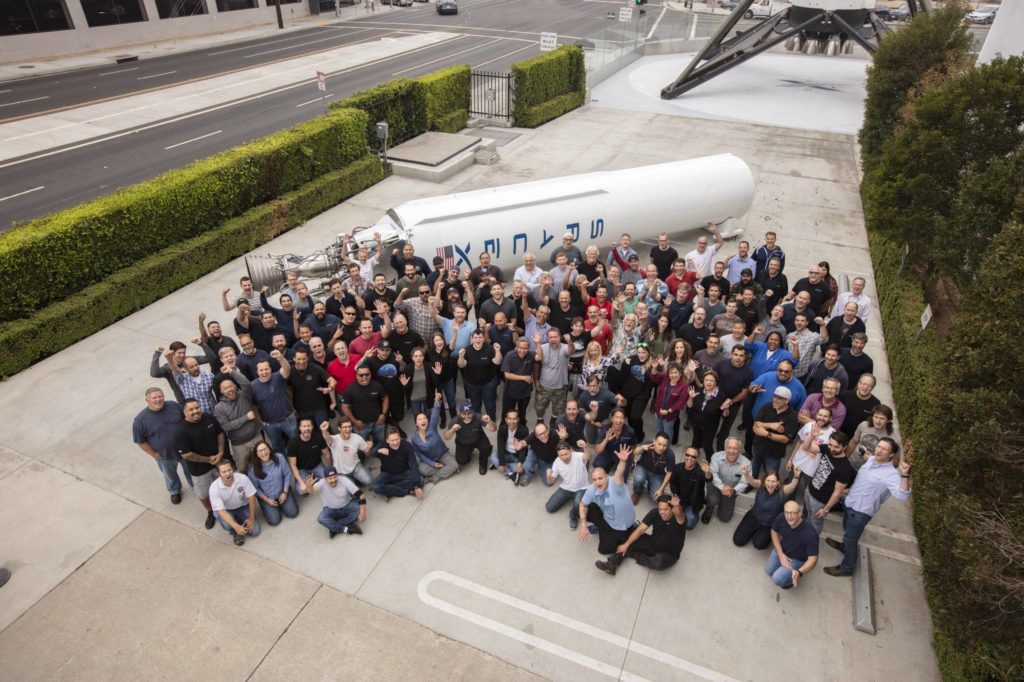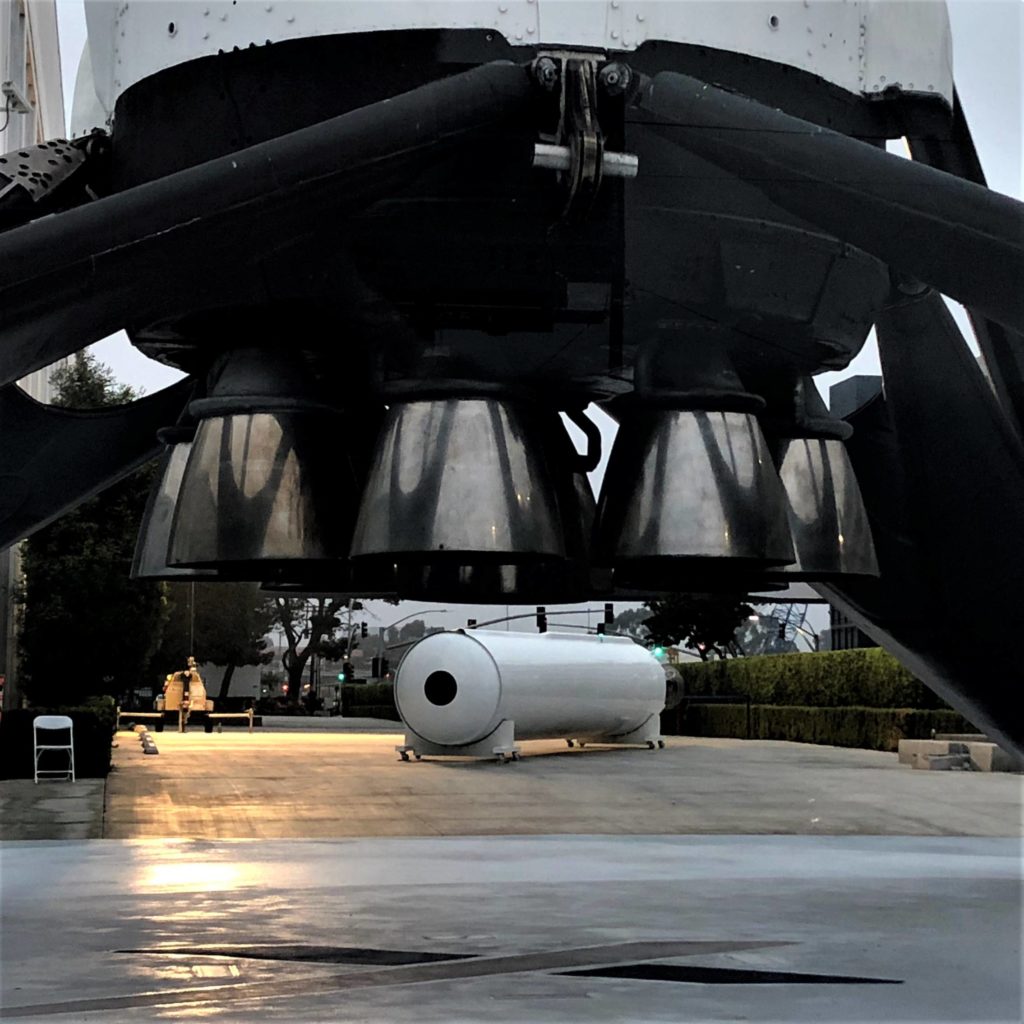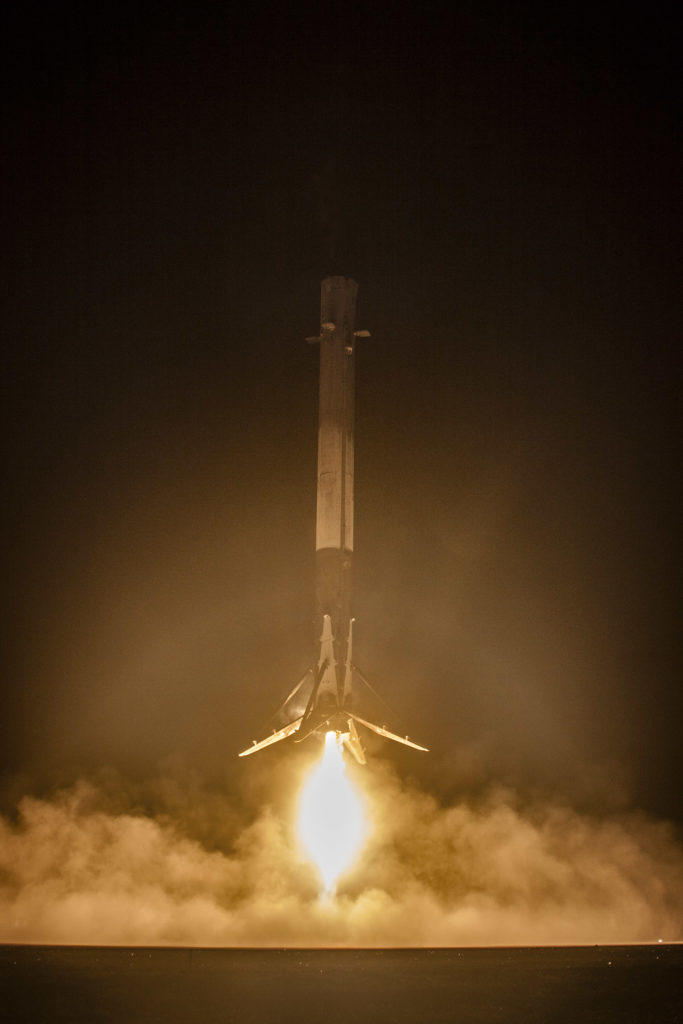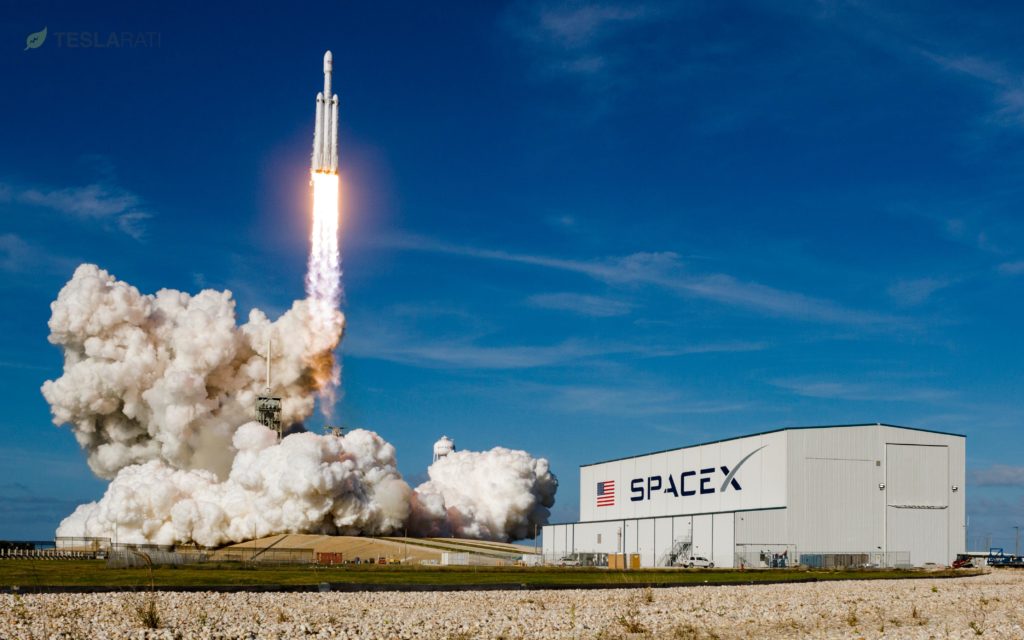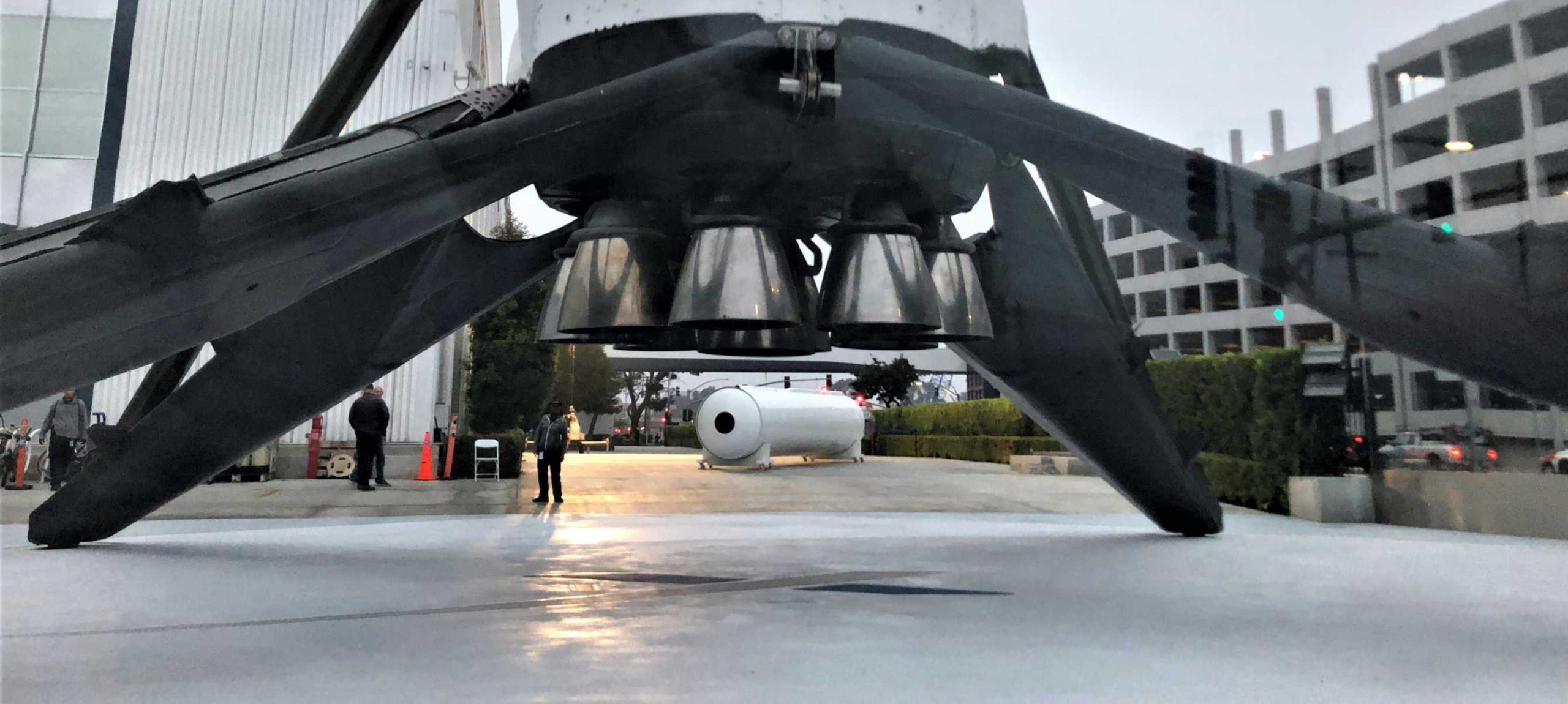
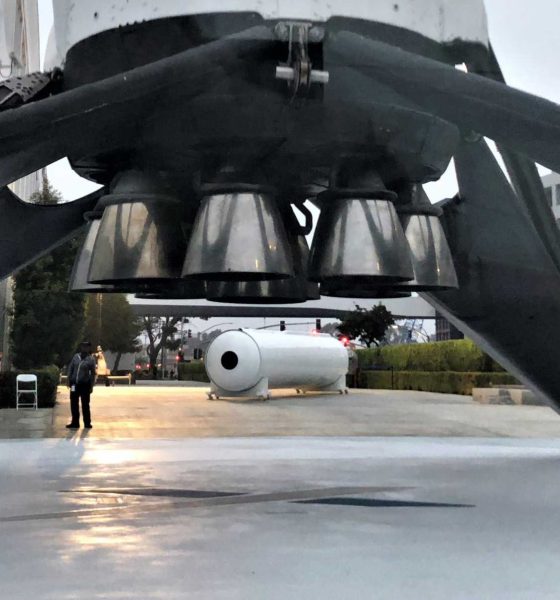
News
SpaceX restores a Falcon 1 rocket for 10th anniversary of first launch success
With plans to give the historic rocket its own place on display inside the company’s Hawthorne factory, SpaceX has refurbished the last remaining Falcon 1 rocket booster and an old Merlin 1C engine to create a model representative of the same Falcon 1 that saved SpaceX and made history on September 28th, 2008, becoming the first privately-developed liquid-fuel rocket to reach Earth orbit.
In the process of celebrating the tenth anniversary of that crowning achievement, one is reminded just how meteoric SpaceX’s rise has been over the course of that decade, marked by relentless progress with Falcon 1, Falcon 9, Falcon Heavy, Cargo Dragon, Crew Dragon, and even the early phases of BFR construction.
https://twitter.com/SpaceXJobs/status/1045832573471969281
On that September afternoon ten years ago, SpaceX may well have saved itself from extinction. Running on funding fumes, CEO and founder Elon Musk has long held that the company would have been forced to effectively cease activity and disband after six years of work and three consecutive Falcon 1 failures had drained almost all of the $100 million he had dedicated in 2002.
Reaching orbit is undoubtedly one of the most technologically challenging feats there is and SpaceX’s merciless failures drove that reality home, ranging from a burst propellant line on the first stage Merlin, liquid propellant sloshing problems on the second stage, and overperformance on the first stage engine causing the two stages to impact after separation, among myriad other problems faced outside of actual launch attempts. Thankfully, thanks to the extraordinary group of several hundred early employees that fixed those problems and pushed onwards, Falcon 1’s fourth attempt was almost flawless and successfully placed a boilerplate mass simulator into a roughly circular ~650km orbit.
- Falcon 1 Flight 4 seen shortly after liftoff from SpaceX’s Kwaj Atoll island pad. (SpaceX)
- Earlier this summer, /r/SpaceX member MarsOrBust101 was lucky enough to spot an old Falcon 1 – long sat at one of SpaceX’s several junkyards – being transferred to its Hawthorne factory. (Reddit /u/MarsOrBust101)
- It’s impossible to know for sure, but that hardware was almost certainly SpaceX’s first Falcon 1 recovery test article in a previous life. (SpaceX)
- SpaceX has restored the last remaining Falcon 1 structures into a display model. The small, unassuming rocket was showcased in front of the company’s Hawthorne factory on September 28th. (Pauline Acalin)
A bit more than nine months later, SpaceX completed the first and last operational launch of Falcon 1, retired to allow the company to focus fully on Falcon 5 (cancelled a few years later), Falcon 9, and Cargo Dragon. Eleven months after that July 2009 mission, SpaceX successfully launched Falcon 9 for the first time and followed it up with the first launch of a functioning Cargo Dragon spacecraft, which spent several hours testing systems in orbit before reentering Earth’s atmosphere and landing in the Pacific Ocean. Two years later in 2012, SpaceX’s Cargo Dragon became the first commercial spacecraft in history to dock with the International Space Station, with operational NASA Commercial Resupply Services launches beginning just six months after.
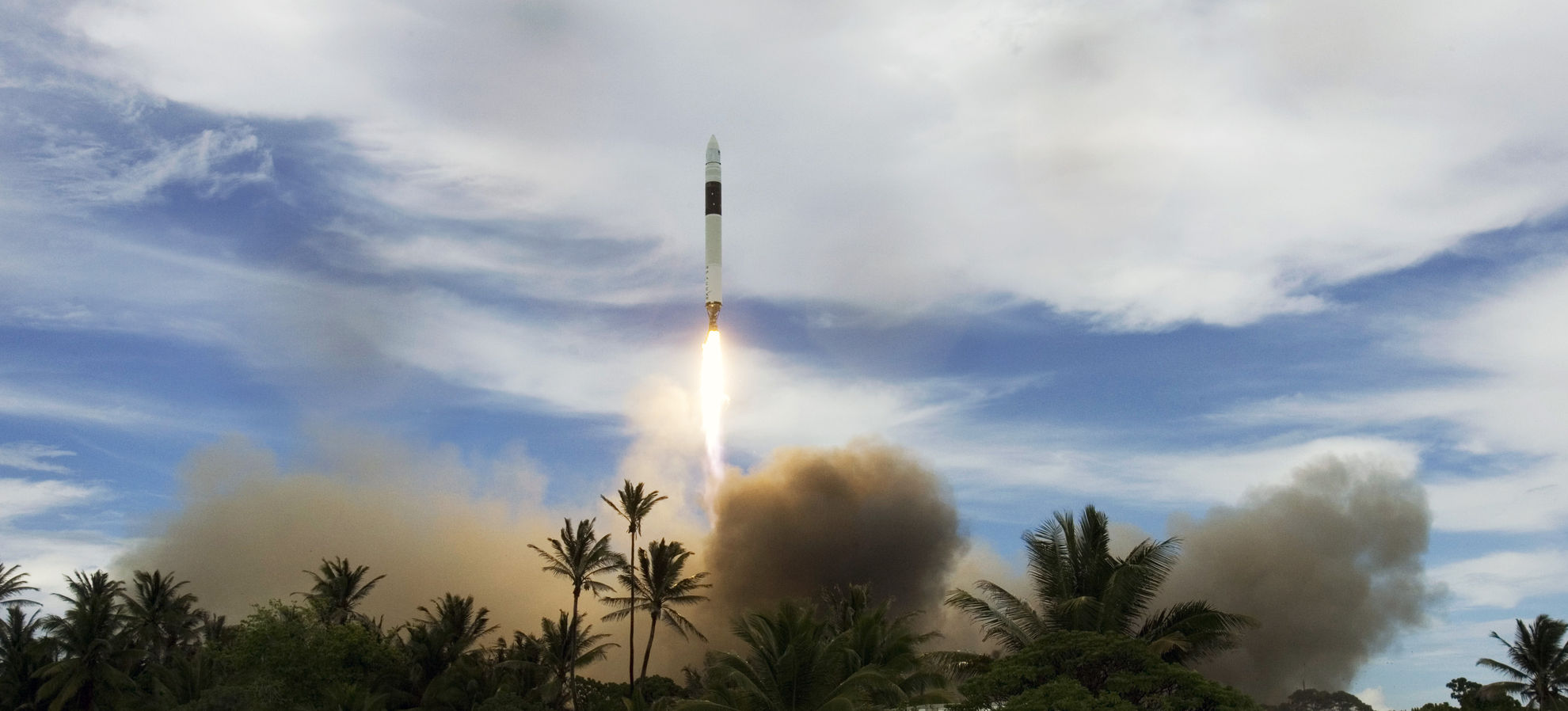
With three years and five successful launches under its belt, Falcon 9 v1.0 was retired and made way for the first of many upgraded Falcon 9 variants, known as Falcon 9 v1.1, featuring 60% greater thrust and mass at liftoff, a new octaweb layout for its nine new Merlin 1D engines, and a range of structural changes that set the stage for future attempts at booster recovery. Two and a half years after Falcon 9 v1.1’s debut and a little over five years since the first successful launch of Falcon 1, SpaceX accomplished the first successful landing of a Falcon 9’s first stage, and that booster now stands proudly outside of the company’s Hawthorne, CA headquarters.
To mark that 10th anniversary, SpaceX apparently decided to salvage a mothballed Falcon 1 stored in a junkyard, refurbishing it into something closer to its former self. Although just the first stage and a Merlin 1C engine were present, the company stationed the refurbished Falcon 1 in front the first recovered Falcon 9 booster and gave all employees an opportunity to see the duo over the course of September 28th.
- Roughly a third of the SpaceX employees present for the company’s Falcon 1 Flight 4 success still remain. (SpaceX)
- Falcon 9 and Falcon 1. (Pauline Acalin)
- SpaceX’s first successful Falcon 9 landing. Booster B1019 now stands in front of SpaceX’s Hawthorne factory. (SpaceX)
- Falcon Heavy successfully clears the tower after its maiden launch, February 6, 2018. (Tom Cross)
The sheer size differential is undeniably impressive. However, a more gobsmacking statistic can be found still. Falcon 1 stands roughly 22 meters tall and would weigh around 39,000 kilograms with a full load of liquid oxygen and kerosene. While the Falcon family’s current payload fairing isn’t nearly tall enough to squeeze in a full Falcon 1 first stage, Falcon Heavy could easily place a fully-loaded Falcon 1 into Low Earth Orbit and still recovery all three of its first stage boosters.
In other words, SpaceX went from launching the first commercial liquid-fuel rocket to reach orbit to launching a super-heavy rocket that could put that entire first rocket into orbit in less than ten years. Not too shabby.
For prompt updates, on-the-ground perspectives, and unique glimpses of SpaceX’s rocket recovery fleet check out our brand new LaunchPad and LandingZone newsletters!

Elon Musk
Elon Musk’s X will start using a Tesla-like software update strategy
The initiative seems designed to accelerate updates to the social media platform, while maintaining maximum transparency.

Elon Musk’s social media platform X will adopt a Tesla-esque approach to software updates for its algorithm.
The initiative seems designed to accelerate updates to the social media platform, while maintaining maximum transparency.
X’s updates to its updates
As per Musk in a post on X, the social media company will be making a new algorithm to determine what organic and advertising posts are recommended to users. These updates would then be repeated every four weeks.
“We will make the new 𝕏 algorithm, including all code used to determine what organic and advertising posts are recommended to users, open source in 7 days. This will be repeated every 4 weeks, with comprehensive developer notes, to help you understand what changed,” Musk wrote in his post.
The initiative somewhat mirrors Tesla’s over-the-air update model, where vehicle software is regularly refined and pushed to users with detailed release notes. This should allow users to better understand the details of X’s every update and foster a healthy feedback loop for the social media platform.
xAI and X
X, formerly Twitter, has been acquired by Elon Musk’s artificial intelligence startup, xAI last year. Since then, xAI has seen a rapid rise in valuation. Following the company’s the company’s upsized $20 billion Series E funding round, estimates now suggest that xAI is worth tens about $230 to $235 billion. That’s several times larger than Tesla when Elon Musk received his controversial 2018 CEO Performance Award.
As per xAI, the Series E funding round attracted a diverse group of investors, including Valor Equity Partners, Stepstone Group, Fidelity Management & Research Company, Qatar Investment Authority, MGX, and Baron Capital Group, among others. Strategic partners NVIDIA and Cisco Investments also continued support for building the world’s largest GPU clusters.
News
Tesla FSD Supervised wins MotorTrend’s Best Driver Assistance Award
The decision marks a notable reversal for the publication from prior years, with judges citing major real-world improvements that pushed Tesla’s latest FSD software ahead of every competing ADAS system.

Tesla’s Full Self-Driving (Supervised) system has been named the best driver-assistance technology on the market, earning top honors at the 2026 MotorTrend Best Tech Awards.
The decision marks a notable reversal for the publication from prior years, with judges citing major real-world improvements that pushed Tesla’s latest FSD software ahead of every competing ADAS system. And it wasn’t even close.
MotorTrend reverses course
MotorTrend awarded Tesla FSD (Supervised) its 2026 Best Tech Driver Assistance title after extensive testing of the latest v14 software. The publication acknowledged that it had previously criticized earlier versions of FSD for erratic behavior and near-miss incidents, ultimately favoring rivals such as GM’s Super Cruise in earlier evaluations.
According to MotorTrend, the newest iteration of FSD resolved many of those shortcomings. Testers said v14 showed far smoother behavior in complex urban scenarios, including unprotected left turns, traffic circles, emergency vehicles, and dense city streets. While the system still requires constant driver supervision, judges concluded that no other advanced driver-assistance system currently matches its breadth of capability.
Unlike rival systems that rely on combinations of cameras, radar, lidar, and mapped highways, Tesla’s FSD operates using a camera-only approach and is capable of driving on city streets, rural roads, and freeways. MotorTrend stated that pure utility, the ability to handle nearly all road types, ultimately separated FSD from competitors like Ford BlueCruise, GM Super Cruise, and BMW’s Highway Assistant.
High cost and high capability
MotorTrend also addressed FSD’s pricing, which remains significantly higher than rival systems. Tesla currently charges $8,000 for a one-time purchase or $99 per month for a subscription, compared with far lower upfront and subscription costs from other automakers. The publication noted that the premium is justified given FSD’s unmatched scope and continuous software evolution.
Safety remained a central focus of the evaluation. While testers reported collision-free operation over thousands of miles, they noted ongoing concerns around FSD’s configurable driving modes, including options that allow aggressive driving and speeds beyond posted limits. MotorTrend emphasized that, like all Level 2 systems, FSD still depends on a fully attentive human driver at all times.
Despite those caveats, the publication concluded that Tesla’s rapid software progress fundamentally reshaped the competitive landscape. For drivers seeking the most capable hands-on driver-assistance system available today, MotorTrend concluded Tesla FSD (Supervised) now stands alone at the top.
News
Elon Musk’s Grokipedia surges to 5.6M articles, almost 79% of English Wikipedia
The explosive growth marks a major milestone for the AI-powered online encyclopedia, which was launched by Elon Musk’s xAI just months ago.

Elon Musk’s Grokipedia has grown to an impressive 5,615,201 articles as of today, closing in on 79% of the English Wikipedia’s current total of 7,119,376 articles.
The explosive growth marks a major milestone for the AI-powered online encyclopedia, which was launched by Elon Musk’s xAI just months ago. Needless to say, it would only be a matter of time before Grokipedia exceeds English Wikipedia in sheer volume.
Grokipedia’s rapid growth
xAI’s vision for Grokipedia emphasizes neutrality, while Grok’s reasoning capabilities allow for fast drafting and fact-checking. When Elon Musk announced the initiative in late September 2025, he noted that Grokipedia would be an improvement to Wikipedia because it would be designed to avoid bias.
At the time, Musk noted that Grokipedia “is a necessary step towards the xAI goal of understanding the Universe.”
Grokipedia was launched in late October, and while xAI was careful to list it only as Version 0.1 at the time, the online encyclopedia immediately earned praise. Wikipedia co-founder Larry Sanger highlighted the project’s innovative approach, noting how it leverages AI to fill knowledge gaps and enable rapid updates. Netizens also observed how Grokipedia tends to present articles in a more objective manner compared to Wikipedia, which is edited by humans.
Elon Musk’s ambitious plans
With 5,615,201 total articles, Grokipedia has now grown to almost 79% of English Wikipedia’s article base. This is incredibly quick, though Grokipedia remains text-only for now. xAI, for its part, has now updated the online encyclopedia’s iteration to v0.2.
Elon Musk has shared bold ideas for Grokipedia, including sending a record of the entire knowledge base to space as part of xAI’s mission to preserve and expand human understanding. At some point, Musk stated that Grokipedia will be renamed to Encyclopedia Galactica, and it will be sent to the cosmos.
“When Grokipedia is good enough (long way to go), we will change the name to Encyclopedia Galactica. It will be an open source distillation of all knowledge, including audio, images and video. Join xAI to help build the sci-fi version of the Library of Alexandria!” Musk wrote, adding in a later post that “Copies will be etched in stone and sent to the Moon, Mars and beyond. This time, it will not be lost.”
